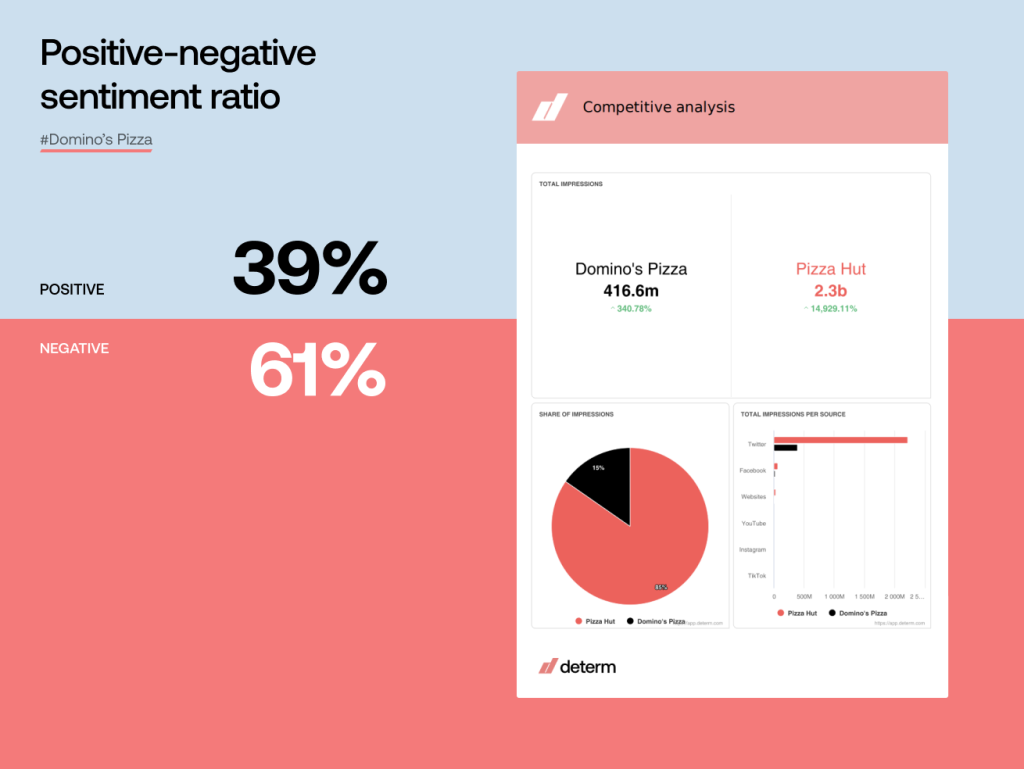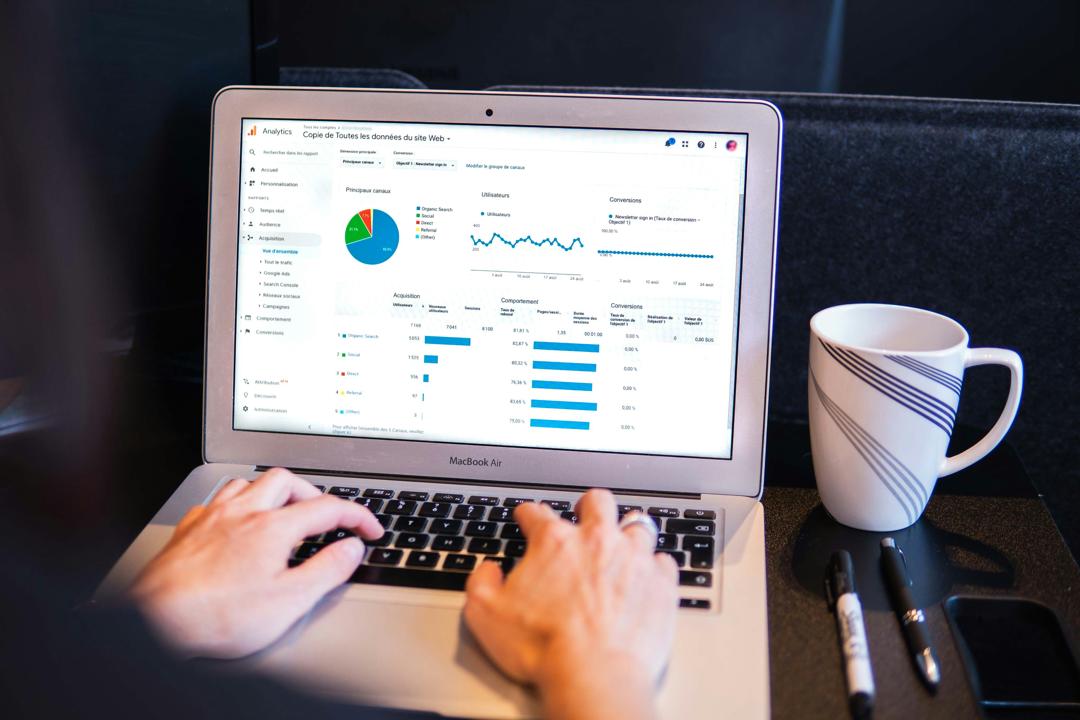A B2B competitive analysis is a must-do for you to thrive in any market and stay ahead of your competitors.
Think about it this way, if you have a store that sells similar products as five other stores in a mall, you’ll be curious to find out why some customers patronize the other stores instead of yours.
💡 Read: Competitive Analysis: All You Need to Know
Do they have better customer service? Do they offer discounts? Any new trends they’re hoping on? Any new product launch?
These questions are the drivers of a competitive analysis that will yield countless benefits for your brand and your customers.
If you’re not sure how to go about the process of analyzing your competition, this article is for you.
You’ll learn all the steps to conduct a B2B competitive analysis and you’ll be equipped to stand out in your niche.
What Is a B2B Competitive Analysis?

A competitive analysis is an in-depth study of a business’s competitors to find out their strengths, weaknesses and overall practices to improve on existing business strategies, get new ideas and explore growth opportunities.
For B2B businesses, a competitive analysis helps them serve the businesses they cater for with an evolving and solution-oriented approach.
The information used for the analysis is obtained from various sources such as company websites and annual reports, customer feedback, reviews, social media monitoring, industry reports and publications.
There’s no limit to what you can focus on for your competitive analysis. From business tools to marketing strategies and product features, you can choose to analyze different business aspects at certain points of the year.
Why You Need a B2B Competitive Analysis
A competitive analysis is important because it gives you an insight into what your competitors are doing, how it’s affecting their positioning and you learn ways to improve your marketing, promotion and conversion of customers.
For B2B brands, the reason is much more increased because the market is growing faster than businesses can keep up with. Competitive analysis will help you avoid trial and error and do only what has worked for others.

Here are a few reasons why you need to conduct a B2B competitive analysis for your business:
- For product enhancement and development
- To improve marketing strategies
- To improve on customer relationships
- To discover new opportunities for growth
- To offer tailored services to your target audience
There are a lot more reasons you’ll figure out as you begin your analysis journey. Let’s now find out how to start.
Steps to Perform a B2B Competitive Analysis
Think of these steps as a checklist you can use to ensure you cover all gaps in your analysis and arrive at the right result.
Identify your competitors
This is the first and most important step to ensure that you’re on the right path in your competitive analysis. You have to choose the most suitable competitors for the analysis to be beneficial to your business. There are direct and indirect competitors you should consider
- Direct competitors: They offer similar products or services to what you offer.
- Indirect competitors: They offer a substitute for the products or services you offer.
Make a list of ten companies that customers count as alternatives for your business. Analyze each of them to know which is closest to being your competitor. Find out the kind of businesses they cater for, the niche of most of their customers, their preferred demographics and what digital platform they thrive in.
Read Competitive Benchmarking: Definition and Best Practices
Once you’ve done that, identify the competitors that are getting the kind of results you want to achieve. Find out their annual revenue report, customer reviews, market position and level of brand awareness.
Decide on which companies are perfect for your analysis using the information you’ve garnered.
Get information about the competitors
You can’t conduct a competitive analysis without substantial information about the business you’re analyzing. Especially in the B2B market, you need sufficient information to analyze your competitors based on standard metrics rather than the thousand and one BOFU content littered about them on the SERPs.
Read How to Conduct a Competitor Audit: Steps and Tools
Looking at their website is a great place to start. You can get information about the kind of audience they attend to, their use cases, product features, pricing details and lots of other information. Getting information may require more than just a Google search. You may need to reach out to their customers to conduct surveys.
You can reach out to employees of the company and even the administration. Social media is also a great place. Media monitoring will help you get all the information you need from social media.
Many B2B companies show up on podcasts for interviews, contribute on LinkedIn and publish several articles, journals, publications that will give you data to analyze about them. Dividing the analysis between their earned and owned channels will give you insight into their own marketing efforts, as well as how the audience perceives them or their products.
Use sites like Crunchbase to find out company size, funding information, Apollo.io, G2 for ratings and other review sites.
Select key company areas to compare

While an analysis can seem very effective, it’s exhausting if you focus on all the metrics. You must choose important areas you want to analyze.
These could include:
- Their customer relationship management: Customer relationship management for small business is a game changer for customer satisfaction and retention and it’s something you must compare to ensure you’re using the right tools. Do they have a community that drives customer interaction? What customer service options do they offer?
- Data privacy measures: Online compliance and data protection measures differ across businesses. Getting an insight into how your competitors do it will help you to get an upper hand.
- Social media marketing strategies: This is a major area to compare seeing as social media is gradually ruling the marketing world. What are their engagement strategies? What kind of content do they put out and how does their audience react to it?
- Product marketing strategies: How do your competitors market their product? What features do they talk about the most? What is their unique selling point?
- Digital presence: This would include analyzing their website, search engine optimization(SEO) strategies, social media and industry publications. You can also gain real-time insights into their brand image and media presence.
Compare and analyze strategies
This is another crucial step you must not miss in conducting your B2B competitive analysis. Even though their approach to various aspects of business may be the same as yours, you have to compare and analyze their strategies both short term and long term.
Read 5 Steps to Conduct a Competitive Landscape Analysis
This may be difficult to know because it requires an in-depth study. You can reach out to their heads of strategy to gain insights on the overall strategy behind most of the brand’s operations.
A content strategy, marketing strategy, customer retention strategy and any other strategy behind their business growth should be your focus.
Perform a SWOT analysis
This is where the actual analysis happens. You compare your SWOT to your competitors SWOT.
SWOT refers to strength, weakness, opportunities and threats.
- Strength: What advantage does your competitor possess over your business?
- Weakness: What areas are your competitors lacking in?
- Opportunities: What factors can you take advantage of?
- Threats: What external factors pose a threat to the business?
Once you’ve answered these questions, you can go ahead to exploit the opportunities, use their weaknesses to your advantage and imitate their strengths.
Revise business strategies
The purpose of a competitive analysis is to improve your business. So, once you’ve done the bulk of your analysis, summarize the important data you garnered and note areas of your business you need to work on based on the results you got.
Read Competitive Media Reporting Guide for PR and Marketing Professionals
Revise business strategies and form new strategies based on your findings. Discuss with your team to brainstorm new ideas to improve on the strengths of your competitors, take advantage of their weaknesses, use the available opportunities and avoid the threats they face.
You can also tweak old strategies depending on if they produce better results than your competitors’ or adopt their own strategy.
Continuous analysis and media monitoring
Competitive analysis especially in the B2B market is not one-off. It requires continuous monitoring, tweaking and analysis.
Social listening and media monitoring is a great way to stay informed about your competitors and any new developments you may need to analyze.
Determ is that tool that helps you to meet your media monitoring goals. It uses artificial intelligence that uses specific keywords to capture comprehensive insights like brand mentions, lead sentiment analysis, competitor marketing campaigns and PR reports. You can also find out the negative feedback about your competitors and take advantage of that to improve your brand and solve the problems your competitors have.
It’s important to keep monitoring your competitors to see if there are any new trends or strategies that you can improve on or take advantage of. You also need to monitor your business to ensure that the analysis-driven new strategies work. You also need to find out over time if it suits your business peculiarities.
Make concrete plans for implementing
More than just finding out what’s going wrong and what you may need to improve on, you should also set targets, a workable roadmap to see that the new strategies are implemented down to the grassroots of your business.
Every employee should be assigned tasks to effect these changes. Like Seth Godin said, “…there’s no shortage of remarkable ideas, what is missing is the will to execute them.”
Read Top 11 Competitor Analysis Tools Every Marketer Should Know
Once you’ve checked this eight-step checklist, you’re well on your way to being miles ahead of your competitors and exploring lots of growth opportunities for your business.
Don’t Copy Your Competitors
Finally, while competitor analysis is necessary to keep you ahead in the market, it’s important to not copy your competitors. Instead, create your own unique strategy using the data they offer.
Your focus should be on your customers and the audience you cater to. Rather than just imitating what’s working, make sure to find out what will work for your business and stick to it. Your comparison should sponsor growth, renewed vision and shouldn’t limit your business.
Remember to try out Determ’s media monitoring tool to automate the bulk of your competitive analysis.